
ELECTRONIC DEVICES & CIRCUITS LAB
OBJECTIVE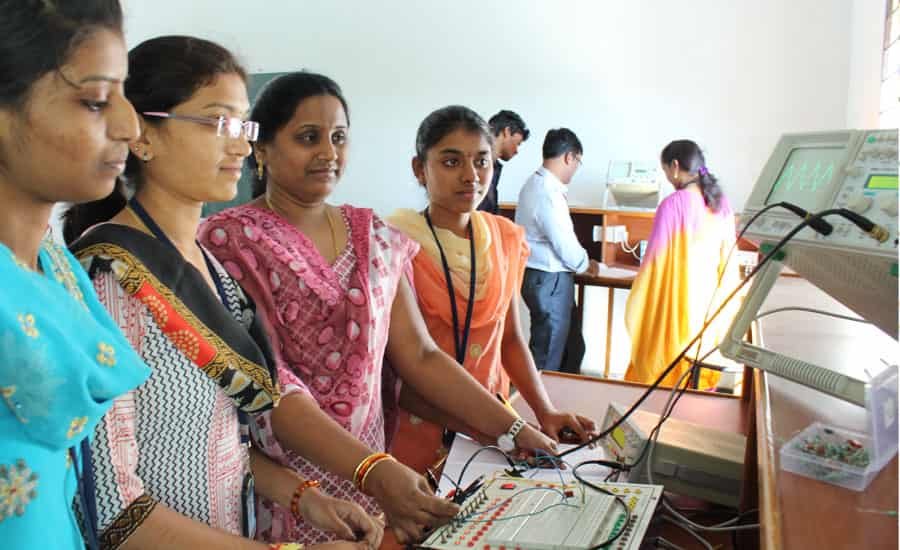 |
This is our busiest set of laboratories, in terms of utilization. This is the main lab where basic experiments like device characteristics and basic analog circuits are held. This lab is sufficient to hold a number of experiments suitable for giving students enough exposure to enable them, to easily adopt experiments in more advanced laboratories in the department. All basic electronic devices and their characteristics & applications can be studied. Using these devices the small electronic circuits can de designed, constructed and verified. In order to introduce the students with basic components of electronics this lab is furnished with analog & digital storage Oscilloscopes, function generators and digital multi-meters. Students can perform experiments on P-N junction diode, Zener Diode, rectifiers, filters, transistor biasing and their characteristics in different modes, UJT characteristics, FETs characteristics, CE& CC amplifier, FET amplifier. |
| Major Equipment |
1. Ammeters 2. Digital Multi-meter 3. Dual Regulated Power Supply 4. Cathode Ray Oscilloscope (30 MHz) 5. Function Generator 6. Decade Resistance Box 7. Decade Capacitance Box 8. Decade Inductance Box 9. Digital IC Trainer Kit 10. CRO Probes |
ELECTRONIC CIRCUITS ANALYSIS LAB
OBJECTIVE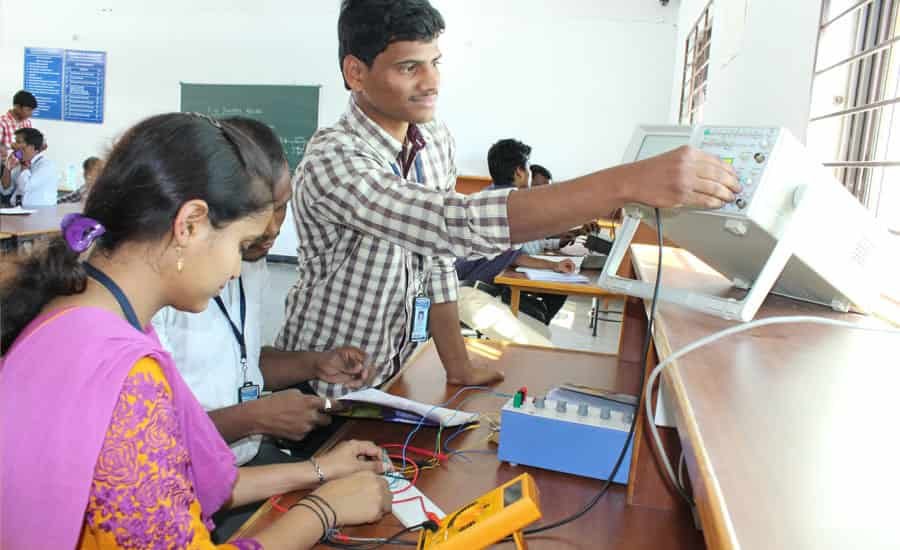 |
This Lab familiarize the students with the fundamentals of analog electronics. This Lab is equipped with a wide range of devices, which helps the students to undergo intensive training and provides a deep insight into the world of electronics. This lab provides a skeleton of applied electronics. In this lab, experiments for Electronic Circuits & Pulse Circuits are carried out. Electronic Circuits & Pulse Circuit experiments are designed to understand the working principles of the Linear & Non- Linear behavior of semiconductor components. It also gives the basic idea for the analysis and design of electronic circuits like clipper, clamper, amplifiers, oscillators, multi vibrators, etc. |
| MAJOR EQUIPMENT | 1. Bread Boards 2. Cathode Ray Oscilloscope(20 MHz & 30 MHz) 3. Voltmeters 4. Ammeters 5. Digital Multimeter 6. Dual Regulated DC Power Supply 7. CRO (30MHz) 8. Function Generator ( 2MHz & 10MHz) 9. Frequency Counter 10. Decade Resistance Box 11. Decade Capacitance Box 12. Decade Inductance Box 13. Linear and Digital IC Tester/span> 14. LCR Meter 15. Softwares-Multisim, P-Spice, Proteus |
ANALOG & DIGITAL COMMUNICATIONS LAB
OBJECTIVE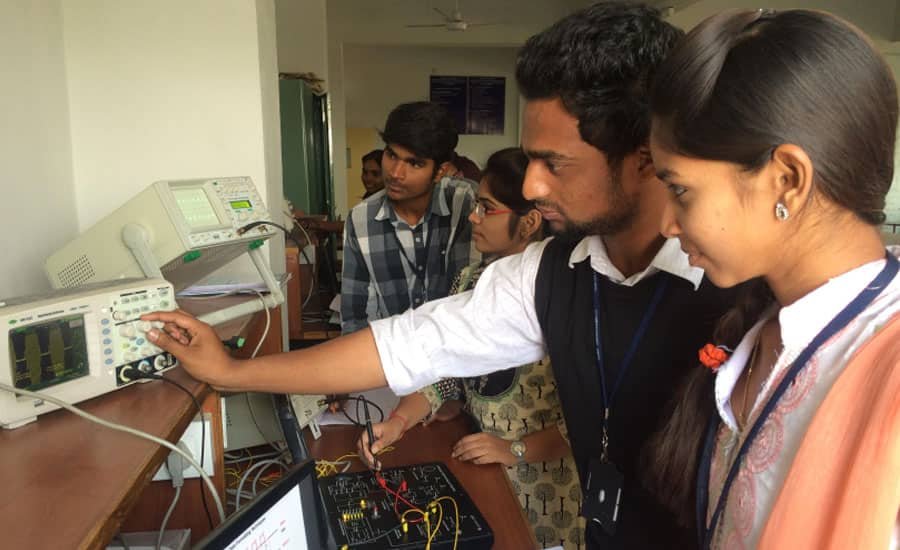 |
We live in an age where various forms of electronic communication are rapidly expanding and the need for new engineering graduates who are prepared to innovate, create, and work with these systems is evident. The communications lab presently serves to give the ECE students a laboratory experience in basic electronic communications systems. The concepts of all type of modulation & demodulation can be studied. The recent communication techniques can be demonstrated with available equipments. Students conduct experiments in a communication lab where they become acquainted with oscilloscopes, signal generator, spectrum analyzers and RF Generators. Measurement of common signals such as sinusoids and periodic square waves are conducted in both the time and frequency domain. The training and experience that ECE students gain in this laboratory enhance their understanding of analog communication systems. This lab has highly advanced digital storage oscilloscopes and spectrum analyzer. |
| MAJOR EQUIPMENT | 1 analog signal sampling and reconstructing unit 2 pulse amplitude modulation and demodulation unit 3 pulse width modulation 4 pulse position modulation 5 Time Division Multiplexer and Demultiplexer trainer kit 6 AM/FM modulation and demodulation 7 Spectrum Analyzer 8 DSB/SSB AM Transmitter 9 DSB/SSB AM Receiver 10 Frequency Division Multiplexer and Demultiplexer 11 CRO (30 MHz) 12 Digital Storage CRO (25 MHz) 13 Computers, Function Generator 14 RF Signal Generator 15 Frequency Counter |
BASIC SIMULATION LAB
OBJECTIVE |
This laboratory caters for the growing requirements of the graduate students of the college. It is connected with the College LAN and is used for a wide variety of applications.It also provides support for parallel and distributed programming. It is equipped with 30 latest computers and remains busy during all working days. The aim of this laboratory is to provide required computing and simulations facilities to the undergraduate students in order to meet their requirements of computer engineering profession. The main emphasis is to do the project work on designing electronics and digital circuits using latest application packages such as MATLAB, PSPICE, and other engineering packages which are heavily used by the undergraduate students. |
DIGITAL SIGNAL PROCESSING LAB
OBJECTIVE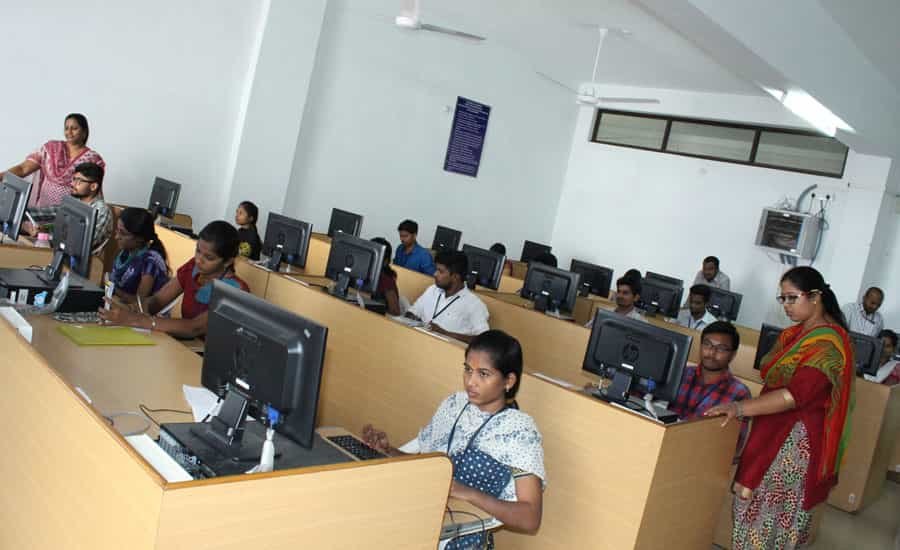 |
Digital Signal Processing (DSP) is concerned with the representation of signals as a sequence of numbers and the operations carried out on the signals to extract specific information contained in them. The objective of the laboratory is to enable the students simulate and experiment with digital signals and systems and apply the theory they have studied in DSP courses. Students can implement digital signal processing algorithms using different computational platforms and DSP tools. They can critically analyze the behavior of their implementation, and observe the specific limitations inherent to the computational platform and tools. The laboratory combines both hardware and software facilities. The DSP lab is equipped with 30 sets of personal computers; Texas Instruments 10 DSP cards (TMS320C6713).The software includes Code Composer Studio, MATLAB etc. |
MICROPROCESSORS & MICRCONTROLLERS LAB
OBJECTIVE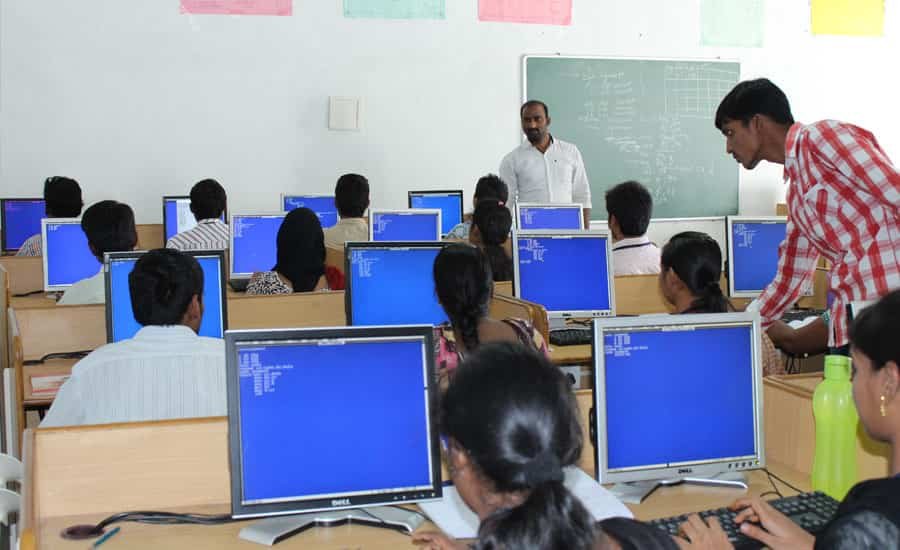 |
A comprehensive undergraduate engineering program must provide opportunities for the application of theoretical concepts to the solution of realistic engineering problems. Advances in digital concepts will be studied in the subject of Microprocessors & Microcontrollers. This lab will be enabling the undergraduate students to work with various microprocessors & microcontrollers. Laying a strong foundation for electronic engineers, this lab makes the students to understand the fundamentals of interfacing, of microprocessors and microcontrollers with input, output devices. This Lab is where our students gain practical experience in the use of basic hardware components. Through experiments, students become familiar with 8086 & 8088 microprocessors and also with 8051 microcontrollers. |
| MAJOR EQUIPMENT | 1. 8086 Microprocessors 2. 8051 Microcontrollers 3. Analog to Digital Converter interfacing kits 4. Digital to Analog Converter interfacing kits 5. Stepper motor control interfacing kit 6. Personal Computers |
DIGITAL & ANALOG IC APPLICATIONS LAB
OBJECTIVE |
A comprehensive undergraduate engineering program must provide opportunities for the application of theoretical concepts to the solution of realistic engineering problems. As analog concepts are integrated into the undergraduate engineering curriculum, this lab will enable them to work with analog & digital IC’S. Laying a strong foundation for electronic engineers this lab makes the students understand the fundamentals of linear IC’s. This Lab is where our students gain practical experience in the use of basic hardware components. Through experiments, students become familiar with IC 555 timer and its applications, voltage regulators using various IC’s, IC 741 operational amplifier and its various applications like adder, subtractor, comparator, integrator, differentiator , waveform generators and filters. |
| MAJOR EQUIPMENT | 1. Oscilloscopes, Function Generators 2. Analog IC Testers 3. Digital IC Testers 4. Linear & Digital Trainer Kits 5. Ammeters, Voltmeters & Multimeters 6. Decade Resistance, Inductance & Capacitance Boxes 7. Dual Regulated Power Supply 8. Personal Computers |
E-CAD AND VLSI LAB
OBJECTIVE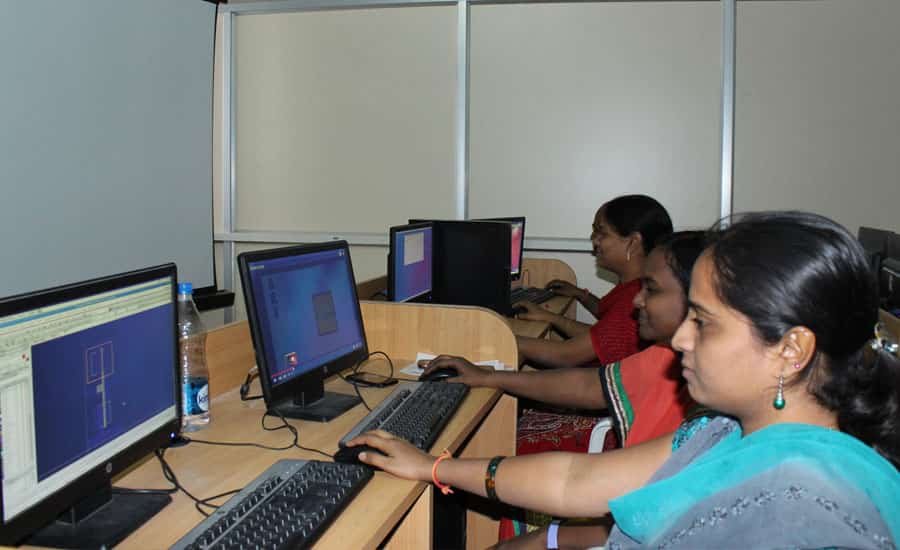 |
VLSI is an assembly of millions of transistors on a single chip that works flawlessly to realize miracles as varied multimedia, mobile communication etc. The VLSI design laboratory is established with the aim of conducting research in various aspects of the ever growing field of Very Large Scale Integration (VLSI) and establishing links between industrial companies.This lab provides basic and advanced facilities for UG coursework related experiments, in the area of device modeling, simulation and various aspects of advanced VLSI design. The lab also has a very rich wealth of state-of-art systems and tools for design and testing which includes Hardware Facilities, EDA tools and Softw are’s. While retaining the salient features of Microelectronics stream, this program includes new lecture and laboratory based experiments specially designed to cater to the needs of the industry. |
MICROWAVE ENGINEERING LAB
OBJECTIVE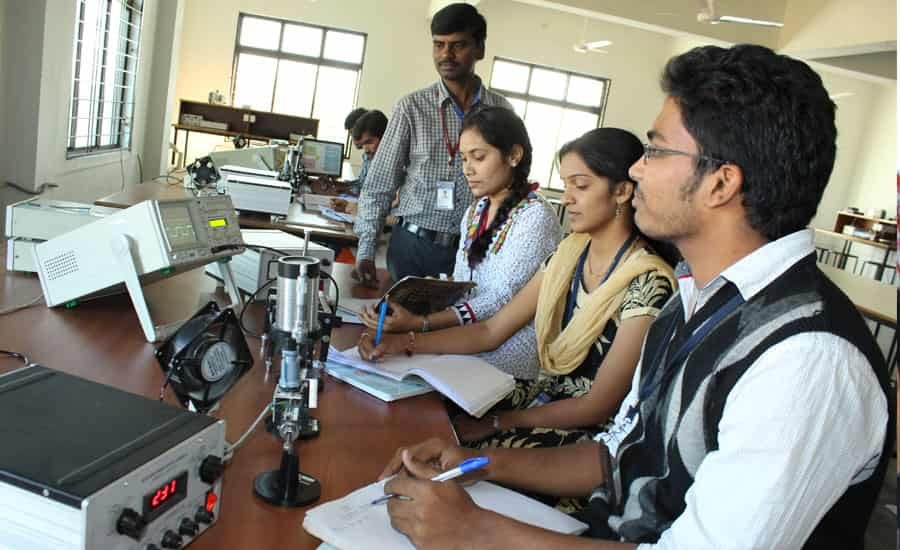 |
We live in an age where various forms of electronic communication are rapidly expanding and the need for new engineering graduates who are prepared to innovate, create, and work with these systems is evident. The microwave engineering and digital communications lab presently serves to give the ECE students a laboratory experience in basic electronic communications systems. The concepts of all type of modulation & demodulation can be studied. The recent communication techniques can be demonstrated with available equipments. Students conduct experiments in a microwave engineering & digital communication lab where they become acquainted with oscilloscopes, signal generators and spectrum analyzers. Measurement of common signals such as sinusoids and periodic square waves are conducted in both the time and frequency domain. The training and experience that ECE students gain in this laboratory enhance their understanding of digital communication systems.In this Lab students are given hands-on experience on setting up the microwave bench for studying the characteristics of microwave sources, scattering parameters of microwave components and radiation pattern of microwave antennas. This Lab fills the gap between theory and experimental techniques. Students will also get exposure to the use of microwave test equipment for making measurements of frequency, VSWR, attenuation, S-parameters, impedance and guide wavelength. |
| MAJOR EQUIPMENT |
1. Microwave bench 2. Klystron power supply 3. VSWR meters 4. Fixed attenuator 5. Directional coupler 6. Magic Tee 7. E-plane tee 8. H-plane tee 9. Circulator 10. Antenna parameter measurement Trainer |
EMBEDDED SYSTEMS LAB
OBJECTIVE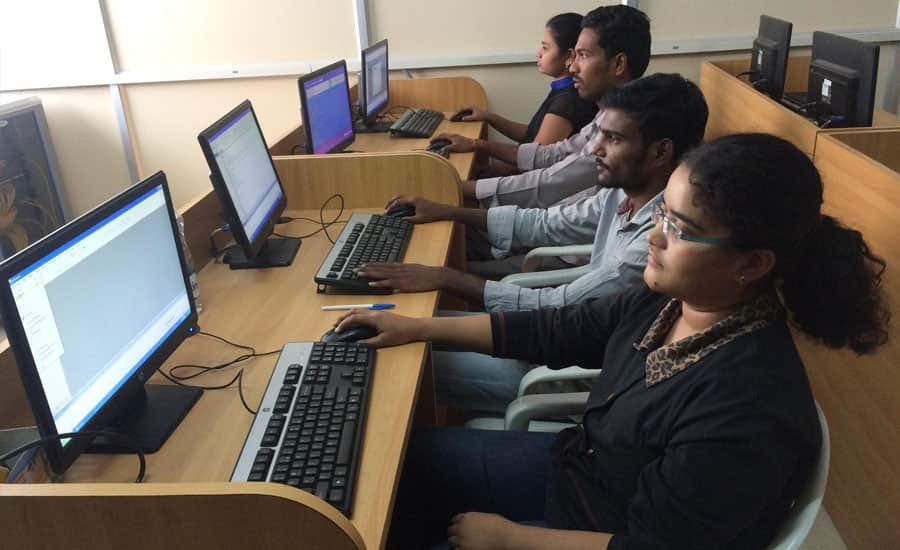 |
The Division of Embedded System Lab was started in the year 2013 for Post-Graduate course in M.Tech – VLSI and Embedded Systems. This course being offered for Full-Time to encourage fresh and practicing engineers to enhance their professional skill in this field. Our vision is to set up Research facilities with lab infrastructure and manpower to create exposure and proficiency in Embedded system by providing training in all domains of embedded system with ARM 7 kits, VLSI with Cadence tool and FPGA/CPLD hardware kits. The syllabus is focusing on various areas like Interfacing 8 bit LED and Switch interface, implement buzzer interface on IDE environment, demonstrate SD-MMC card interface, application which creates tasks and sets the time slice, interfacing of basic audio processing on IDE environment. |
DIGITAL SYSTEM DESIGN LAB
OBJECTIVE |
Objectives of the DSD Lab are :- 1. To understand common forms of number representation in logic circuits. 2. To learn basic techniques for the design of digital circuits and fundamental concepts used in the design of digital systems. 3. To understand the concepts of combinational logic circuits and sequential circuits. 4. To understand the Realization of Logic Gates Using Diodes & Transistors. This lab drives the students to emphasize on digital Circuits. This lab also develops keen interest in digital circuit designing. Prior to this designing part, students are supposed to analyze the digital logic families and design of various circuits & systems by using these logic families. |
| MAJOR EQUIPMENT |
1. Digital IC Trainer with built-in clock generator and I/O ports (18 No’s). 2. 30 to 40 varieties of 74 series TTL Integrated Circuit Components like IC 7483, 7485, 74180, 7411, 7476, 7400, 7402, 7404, 7406, IC 7408, 7432, 7486. 3. Jumpers, Connectors. 4. Breadboards |
DATA COMMUNICATION & NETWORKS LAB
OBJECTIVE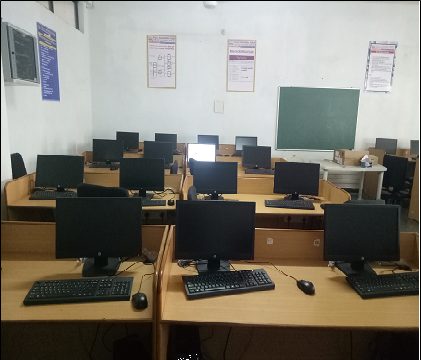 |
This lab's main objective is to provide students with an overview of the concepts and fundamentals of data communication and computer networks. Topics to be covered include: data communication concepts and techniques in layered network architecture, error detection and correction mechanisms in Data Link layer, multiple access protocols, ip addressing, routing in Network layer, different routing protocols, concepts of process to process delivery in Transport layer, congestion control techniques, different Application layer protocols and some modern techniques of communication. |
| MAJOR EQUIPMENT | Software Description: Network Simulator (NS2) is an open-source simulation tool that runs on Linux. It is a discrete event simulator targeted at networking research and provides substantial support for simulation of routing, multicast protocols and IP protocols, such as UDP, TCP, RTP and SRM over wired and wireless (local and satellite) networks. |
